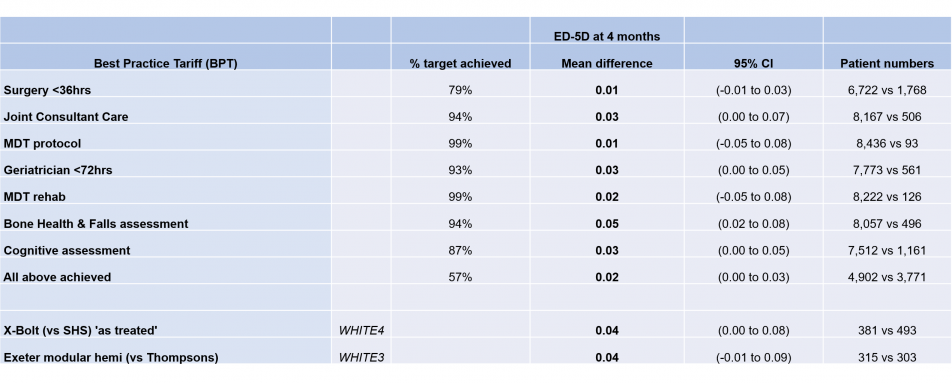In 2010 the NHS introduced performance based remuneration known as Best Practice Tariff (BPT); now risen to a payment of £1,335 for achieving the above 7 targets. Hospitals have rightly prioritised service provision for this frail patient group, investing in additional consultants in geriatric care, providing bone health, falls assessments and cognitive assessments.
Results published in the Bone and Joint Journal this month from the WHiTE Hip Fracture Cohort has shown improved patient outcome scores (EQ-5D) at 4-months, which has been welcomed as "Every Little Helps".
However, the quantum of improvement has a greater effect size with the use of modern implants, such as the Exeter modular hemiarthroplasty (WHITE3) or the X-Bolt XHS (WHITE4).
Modern implants give a greater EQ-5D benefit, versus 6 of 7 individual BPT parameters, and approximately twice that of when all BPT parameters are achieved (EQ-5D mean differences: +0.04 vs +0.02).
Critical analysis of the results data, also reveals a shorter length of hospital stay for the Exeter hemiarthroplasty, and ultra-low cut-out and reoperation rates with X-Bolt. Both these contribute to overall healthcare savings, independent of the patient benefits.
Cost-benefit analysis is required to quantify the cost investment in BPT or price premium of surgical implants, versus the overall healthcare costs and the relative quantum improvement to patients' health-related quality-of-life (EQ-5D).
